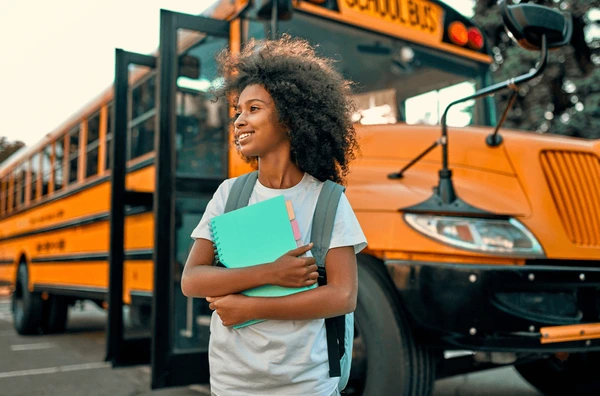The architecture of a school is more than just about buildings and classrooms—it is about creating environments that foster learning, creativity, community, and growth. In today’s rapidly changing world, schools are being built with innovative designs and cutting-edge infrastructure that aim to provide more than just a place for education. These designs take into account the evolving needs of students, teachers, and communities, incorporating sustainability, technology, and flexible spaces to create dynamic learning environments.
Having witnessed the transformation of educational spaces firsthand, I can confidently say that the way schools are being constructed today will shape how the next generation learns and grows. In this article, we will explore the latest trends in school construction, focusing on how new designs and infrastructure innovations are revolutionizing education, enhancing the learning experience, and building the future of education.
1. Sustainable School Construction: Eco-Friendly Designs for the Future

As environmental awareness continues to rise, sustainability has become a key focus in school inca construction. Schools today are being built with green materials, energy-efficient designs, and a focus on minimizing their ecological footprint. These eco-friendly schools aim to not only reduce their environmental impact but also teach students the importance of sustainability through the very spaces they inhabit.
Key Features of Sustainable School Construction:
-
Energy-Efficient Buildings: Modern school buildings are designed to be energy-efficient, with features like solar panels, green roofs, rainwater harvesting systems, and high-performance insulation. These elements reduce the school’s energy consumption and create healthier environments for students and staff.
-
Natural Lighting: Large windows and strategically placed skylights allow for natural light to illuminate classrooms, reducing the need for artificial lighting and helping to create an environment that enhances focus and productivity. Studies show that students who are exposed to natural light perform better academically and are more engaged in learning.
-
Indoor Air Quality: Advanced ventilation systems and the use of non-toxic materials help maintain good air quality, which is crucial for the health of students and teachers. Schools are using low-VOC paints and sustainable flooring materials that contribute to healthier, more comfortable indoor environments.
-
Sustainable Landscaping: Many new schools incorporate native plant landscaping, which requires less water and maintenance. Outdoor learning spaces and gardens are also becoming common, allowing students to engage with nature and learn about sustainable practices in real-time.
Sustainability isn’t just about building eco-friendly structures; it’s about creating an environment that reflects the values of a generation that will be responsible for the future of our planet knowledge. By designing schools that are both resource-efficient and environmentally conscious, we are giving students a space to thrive in and a valuable lesson on sustainability that they can carry with them into adulthood.
2. Flexible and Adaptive Learning Spaces
Gone are the days of traditional, rigid classroom layouts. Modern school designs emphasize flexibility and adaptability to accommodate different learning styles, technologies, and teaching methods. The idea is to create spaces that can evolve based on the needs of students, teachers, and the subjects being taught.
Features of Flexible Learning Spaces:
-
Modular Furniture: Schools are adopting movable desks, chairs, and partitions that allow for easy reconfiguration of the classroom. This enables teachers to create various learning setups, whether it’s group work, individual tasks, or collaborative projects.
-
Breakout Spaces: In addition to traditional classrooms, schools are incorporating breakout spaces—smaller, quieter areas for focused study, group work, or one-on-one learning with a teacher. These spaces are often equipped with comfortable seating, interactive whiteboards, and computers for digital learning.
-
Technology Integration: Modern classrooms are designed with technology in mind. Interactive smartboards, projectors, and tablets help integrate digital learning, allowing students to access content, collaborate on projects, and engage in interactive lessons. The goal is to make learning more immersive and dynamic, bridging the gap between physical and digital spaces.
-
Flexible Walls and Dividers: Many new schools are incorporating movable walls or partitions that can adjust to the class size and the type of lesson being taught. These flexible walls allow teachers to adapt the space for different needs, ensuring that the classroom can change throughout the day as necessary.
By allowing classrooms to be more dynamic and adaptable, schools are fostering environments that cater to diverse learning needs and promote collaboration, creativity, and critical thinking.
3. Incorporating Technology into School Infrastructure
With the digital age in full swing, the integration of technology into school infrastructure is no longer optional—it’s essential. The idea is to build a learning environment that enhances digital literacy and provides students with access to the tools they need to succeed in a tech-driven world.
Technological Innovations in School Construction:
-
High-Speed Internet and Wi-Fi: Reliable, high-speed internet is a must-have for modern schools. Whether it’s for accessing digital textbooks, using educational apps, or participating in virtual learning, students need fast and consistent internet access throughout the school.
-
Smart Classrooms: Many new schools are outfitted with smart technologies, such as interactive displays, projectors, and virtual whiteboards that encourage collaboration and digital engagement. Teachers can access cloud-based tools, and students can interact with lessons in new, more engaging ways.
-
STEM Labs: Science, Technology, Engineering, and Math (STEM) education is a priority in modern schools. As a result, dedicated STEM labs are being incorporated into new school designs. These labs are equipped with 3D printers, robotics kits, and computers for coding, providing students with hands-on opportunities to explore the fields of science and technology.
-
Digital Security Systems: With the integration of technology comes the need for digital security. Modern schools are using advanced security systems that include biometric access systems, video surveillance, and cloud-based monitoring. These systems ensure the safety of students and staff while maintaining privacy and security.
By integrating technology throughout the infrastructure, schools are preparing students for the future and ensuring that they have the skills and tools needed for the digital world.
4. Creating Collaborative and Inclusive Environments
Building schools that foster collaboration, creativity, and inclusivity is essential for a well-rounded education. School construction today emphasizes open, inclusive spaces that encourage students from all backgrounds and abilities to work together and support one another.
Features of Collaborative and Inclusive School Design:
-
Inclusive Design: New schools are being built with a focus on accessibility, ensuring that students with disabilities can navigate the entire campus. This includes wheelchair-accessible entrances, braille signage, and adjustable furniture to accommodate students with different needs.
-
Multi-Purpose Spaces: Many schools now feature multi-purpose areas that can be used for assemblies, performances, group work, or social events. These spaces foster collaboration and encourage students to interact and engage in extracurricular activities.
-
Outdoor Learning Spaces: Schools are embracing outdoor classrooms and learning gardens that allow students to learn in nature. These spaces are not just relaxing but can also serve as opportunities for science projects, environmental studies, and creative thinking.
By creating inclusive and collaborative spaces, schools are fostering a sense of belonging and community, ensuring that all students, regardless of their background or abilities, can succeed and thrive.
5. Sustainable and Long-Term Design for the Future
Building for the future isn’t just about implementing current technologies and trends—it’s about creating infrastructure that will stand the test of time. Long-term sustainability is a key aspect of modern school construction, ensuring that schools are not only functional and beautiful today but also continue to serve future generations of students.
Key Aspects of Sustainable Design:
-
Durable Materials: Schools are being built with durable, low-maintenance materials that are designed to last. These materials reduce the need for constant repairs, lowering long-term costs and contributing to sustainability.
-
Energy-Efficient Systems: Schools are investing in energy-efficient systems, including solar panels, LED lighting, and high-efficiency HVAC systems that help reduce energy consumption over time.
-
Smart Waste Management: Many schools now implement smart waste management systems that track and optimize recycling efforts, composting, and waste disposal, making them more environmentally responsible.
The goal is to create buildings that not only serve the current student population but also have a minimal environmental impact and are adaptable to future needs.
Conclusion: Building a Brighter Future for Education
As we look to the future, school construction is evolving to meet the needs of a new generation of learners. With innovations in sustainability, flexibility, technology, and collaboration, schools are becoming places where students can not only receive a quality education but also thrive in an environment that supports their overall development.
Read Also About: Teacher Mentorship
Teacher mentorship plays a pivotal role in the professional development of educators. Whether it’s guiding new teachers through the challenges of their first year or offering seasoned educators fresh perspectives, mentorship fosters growth, collaboration, and continuous learning. In this post, we’ll explore the importance of teacher mentorship, the benefits for both mentors and mentees, and how schools can establish effective mentorship programs that lead to stronger, more confident teachers.


